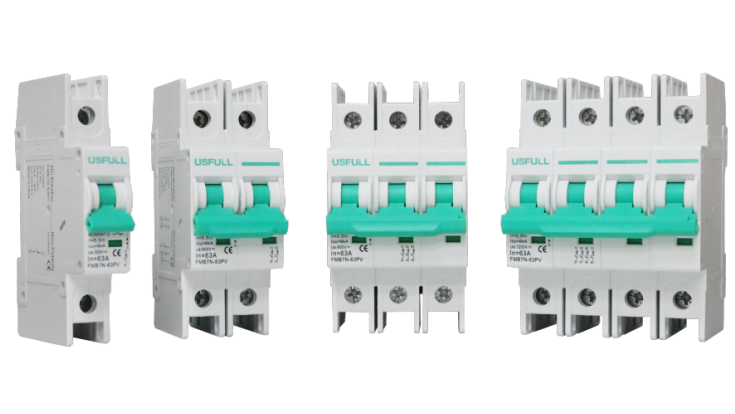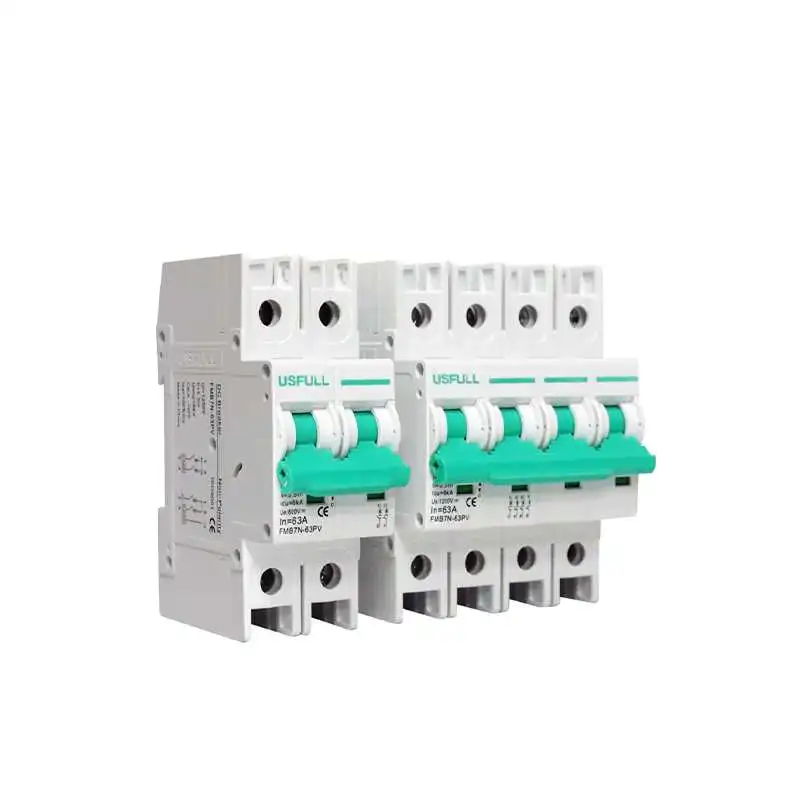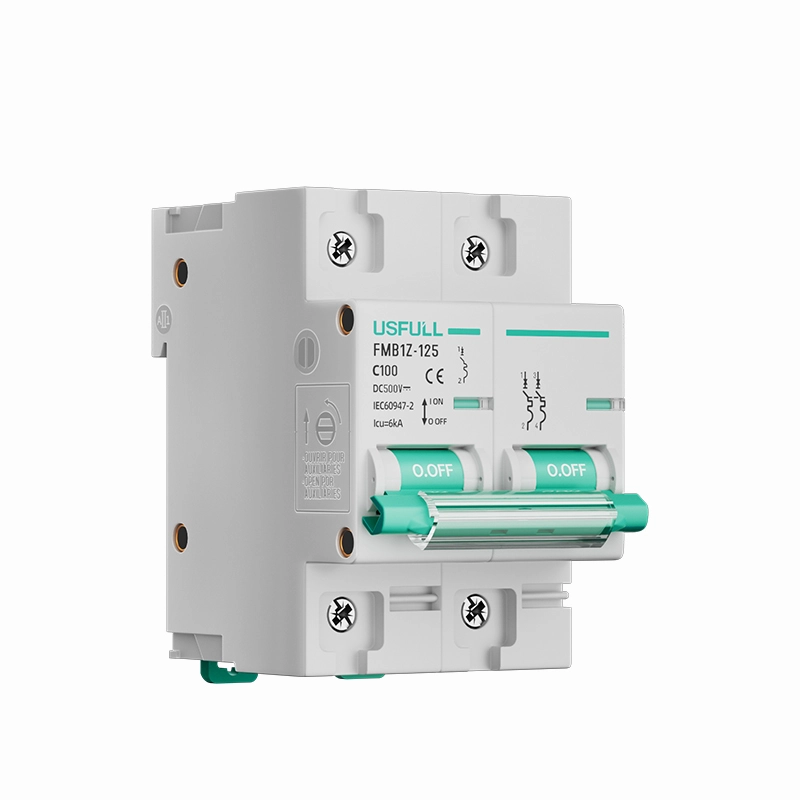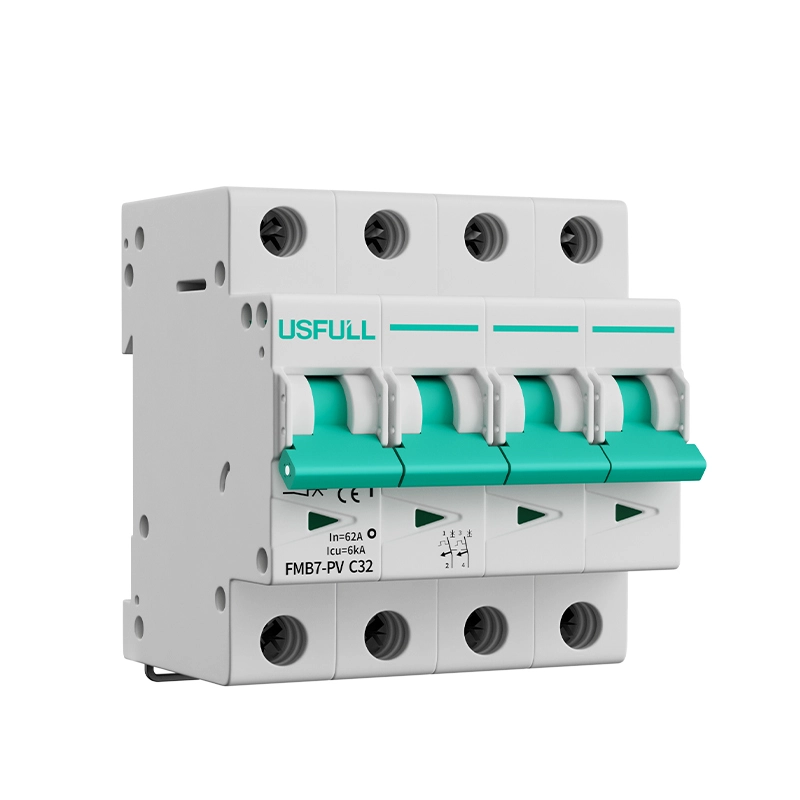What Factors Should Be Considered When Selecting a DC Circuit Breaker?
When choosing a DC (direct current) circuit breaker, several factors must be considered to ensure the safe and reliable operation of the electrical system. Here are some important factors to consider when choosing a DC circuit breaker:
1.Current rating:
The first consideration is the current rating of the breaker. The breaker should be rated for the maximum current that the solar panel or the string of panels can generate under normal operating conditions. For example: 100 amp DC breaker, 100 A DC breaker, 200 amp DC breaker, DC breaker 250A, and others.
2.Voltage rating:
The second consideration is the voltage rating of the breaker. The breaker should be rated for the maximum voltage of the solar panels or the string of panels. For example 12V DC circuit breaker, 24V DC circuit breaker, and others.
3.Breaking capacity:
Breaking capacity is the maximum current that a circuit breaker can safely break without damage. Select a breaker with a breaking capacity that is greater than the maximum current that can flow through the circuit.
4.Trip curve:
The trip curve is the characteristic response of the breaker to different levels of overcurrent. Select a breaker with a trip curve that matches the requirements of your application. For example, a fast trip curve may be needed for a sensitive load, while a slow trip curve may be needed for a motor starting circuit.
5.Temperature range:
The breaker should be able to operate within the temperature range of the solar panel or the string of panels.
6.Enclosure type:
The breaker should be installed in an appropriate enclosure to protect it from environmental factors such as moisture and dust.
7.Type:
DC circuit breakers are available in various types including thermomagnetic, pure magnetic, and solid state. The type of circuit breaker you choose depends on the specific needs of your application.
8.Enclosure:
DC circuit breakers are available in a variety of housing types including open frame, molded case and DIN rail mount. Which housing type to choose depends on the installation site and environmental conditions. With these factors in mind, you can choose the right DC circuit breaker for your specific application DC breaker for battery, DC breaker for solar, and others to ensure safe and reliable operation of your electrical system.
How to Calculate DC Breaker Size?
Calculating the size of a DC (Direct Current) breaker involves considering the current rating and the circuit characteristics. Here’s a general guide on how to calculate the appropriate DC breaker size:
1.Determine the current:
Find out the maximum current that will flow through the circuit. This could be the sum of the currents of all devices connected to the circuit.
2.Select a safety margin:
It’s common practice to add a safety margin to the calculated current to ensure the breaker can handle occasional spikes or overloads without tripping unnecessarily. A typical safety margin could be around 25% to 50% over the calculated current.
3.Choose a breaker rating:
Once you have the adjusted current value, select the nearest standard breaker rating that is equal to or slightly higher than the adjusted current. Breaker ratings are usually available in standard values like 5A, 10A, 15A, 20A, etc.
4.Check circuit voltage:
Make sure that the selected breaker’s voltage rating matches or exceeds the circuit’s voltage. Using a breaker with a lower voltage rating than the circuit could be dangerous.
5.Consider circuit type:
Different types of circuits may have specific requirements. For example, inductive loads (like motors) and capacitive loads might require different considerations due to their unique characteristics.
6.Account for special conditions:
If the circuit experiences intermittent high current (such as starting currents in motors), you might need to select a breaker with a higher “trip” rating to prevent nuisance tripping.
7.Refer to manufacturer guidelines:
Always refer to the manufacturer’s guidelines and specifications for the specific breaker you are using. They may provide additional insights or recommendations for breaker sizing.
Conclusion:
By considering these factors, you can choose a solar DC breaker that will provide reliable and safe protection for your solar PV system. It is always recommended to consult with a qualified solar installer or electrician to ensure that the breaker is properly selected and installed for your specific system requirements. And USFULL Brand can be your one of choice!





